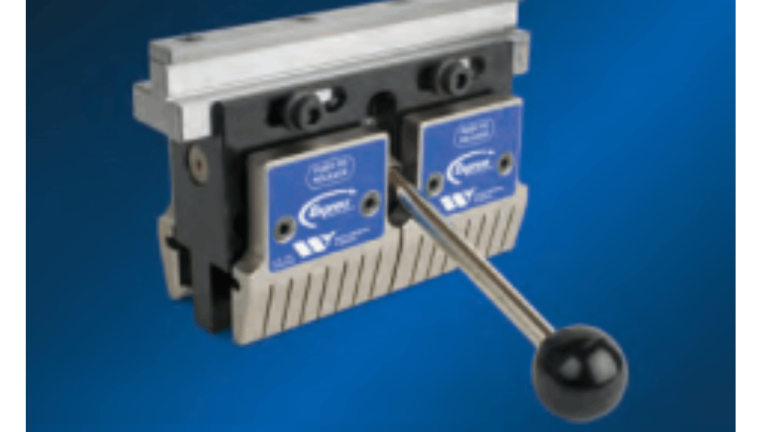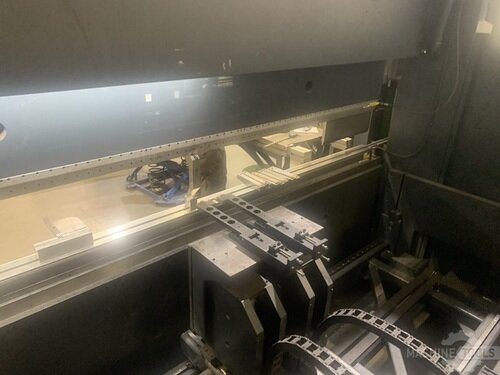I’ve spent years working with fabricators to transform their operations through press brakes, lasers, and tooling solutions. In my time at Mac-Tech, I’ve seen firsthand how the right combination of equipment and strategic guidance can dramatically improve efficiency, precision, and profitability. Whether it’s speeding up production with our advanced fiber laser systems, or fine-tuning press brake configurations to produce tighter tolerances, I’m passionate about helping shops unlock their full potential. Today, I’ll walk you through some of the insights I’ve gained, as well as share why so many fabricators are making the jump to fiber laser cutting for both sheet and tube applications.
Fast, Lean, and Profitable: Consultative Strategies for Fiber Lasers, Press Brakes, and Advanced Tooling
My approach begins with a consultative understanding of each client’s unique demands. Whether you’re a high-volume manufacturer or a custom fabrication shop, Mac-Tech believes that success starts with the right equipment—and the right insight. By focusing on how each press brake and fiber laser integrates into your entire workflow, I help pinpoint the best solution to maximize throughput and cut downtime.
Press brakes are often the backbone of a fabrication process. Beyond mere bending force, we delve deeper into tooling setups, back gauge configurations, and CNC controller options. With the right tooling strategy, manufacturers can minimize setup time and streamline repeat runs. Efficiency gains here translate directly into more consistent quality, reduced labor hours, and higher ROI.
Energy efficiency also plays a critical role in profitability. By pairing fiber lasers’ lower power consumption with precise press brake configurations, our clients see tangible financial benefits. Slashing energy costs may seem like a small detail day-to-day, but over a year’s worth of production, those savings really add up. It’s my job to help you see both the immediate and long-term payoff.
ERMAKSAN POWER-BEND FALCON BENDING MACHING
Switching to Fiber: Comparing CO₂ and Plasma for Greater Speed, Efficiency, and Maintenance Savings
“Why Fabricators Are Switching to Fiber Lasers for Sheet and Tube Cutting” is a question I’m constantly asked. Fiber lasers outpace CO₂ systems with faster cutting speeds, especially on thinner materials. They also require less power to deliver the same or better results—cutting energy bills and operational costs significantly. When every minute saved can mean more throughput, it’s no wonder so many of our clients are excited about this technology.
Maintenance is another area where fiber lasers shine. Traditional CO₂ lasers need more frequent part replacements and involve complex optics. Plasma cutting, while sometimes faster on thick materials, doesn’t match fiber lasers’ precision and cut quality—and it can’t touch the overall efficiency. By contrast, fiber lasers feature a simpler beam path, fewer consumable parts, and less downtime, helping you keep your production schedule on track.
At Mac-Tech, we take a proactive approach to matching you with the ideal laser system for your workload and material requirements. We look at present demands and future growth, ensuring you don’t outgrow your machine six months or a year down the line. This forward-thinking mindset helps you sustain momentum and deliver superior parts without constant process adjustments.
FAQ
Q: How often should I schedule preventative maintenance on my press brake?
Regular inspections every 3–6 months are ideal, but consult your production levels and OEM guidelines for the best interval.
Q: What factors should I consider when selecting press brake tooling?
Focus on the material thickness, bend radius, and specialty features like segmented punches or quick-change clamps for higher flexibility.
Q: Can fiber lasers handle thicker material as efficiently as CO₂ or plasma?
Yes, fiber lasers perform very well on a range of material thicknesses. For very thick plate, we’ll discuss power settings and bed capacities for the best outcome.
Q: How can I improve efficiency without buying a whole new machine?
Sometimes smaller upgrades—like a new back gauge configuration or high-quality tooling—can significantly cut setup times and improve overall throughput.
Q: Will switching to fiber laser technology require specialized training?
Basic fiber laser operating principles are straightforward, and Mac-Tech offers training to ensure your team feels confident and capable from day one.
Q: How do I know if an equipment upgrade will really boost my ROI?
We provide detailed cost-benefit analyses, factoring in savings on maintenance, electricity, operator hours, and potential for increased throughput.
Q: How do I maintain long-term accuracy on my bending operations?
Incorporate routine calibration checks, consider high-precision tooling, and utilize updated CNC controls to keep consistent results.
In this constantly evolving sector, the right press brake, laser, or innovative tooling solution can make an immediate, measurable difference for your bottom line. When efficient technology and consultative guidance go hand in hand, you can confidently move forward knowing every bend, cut, and formed part meets the highest standards. Reach out anytime at jperry@mac-tech.com to learn more about how we can tailor a solution specifically for your shop, and let’s collaborate on driving faster, leaner, and more profitable results together.
Get Weekly Mac-Tech News & Updates








